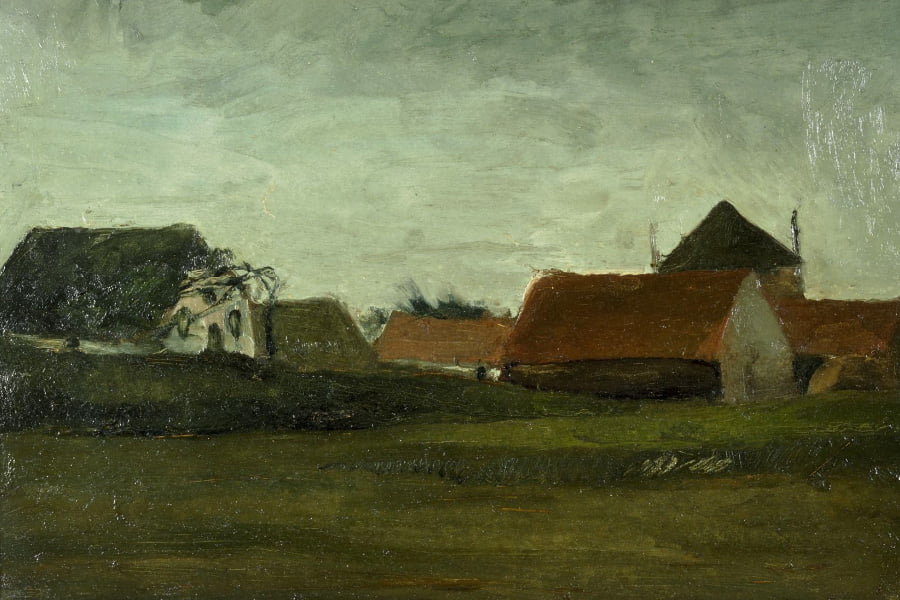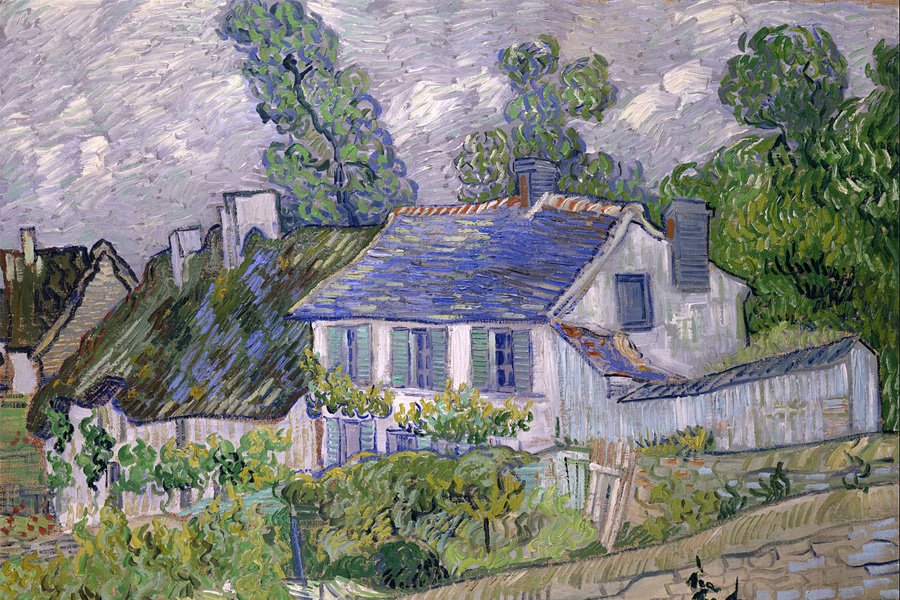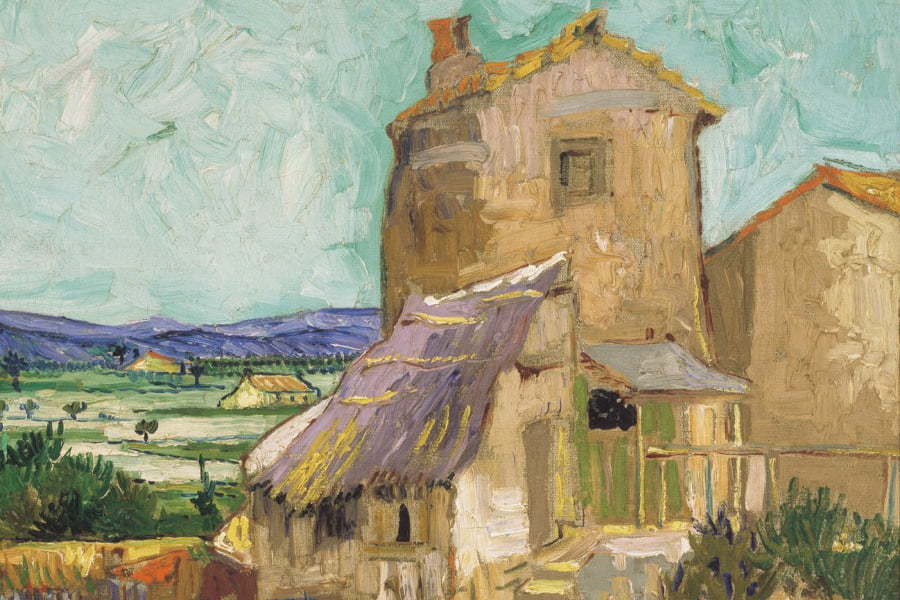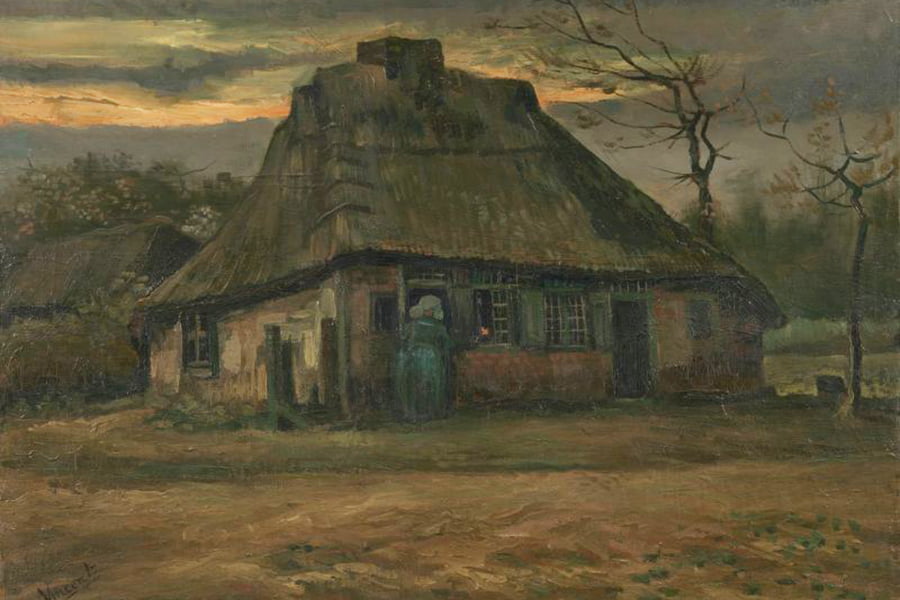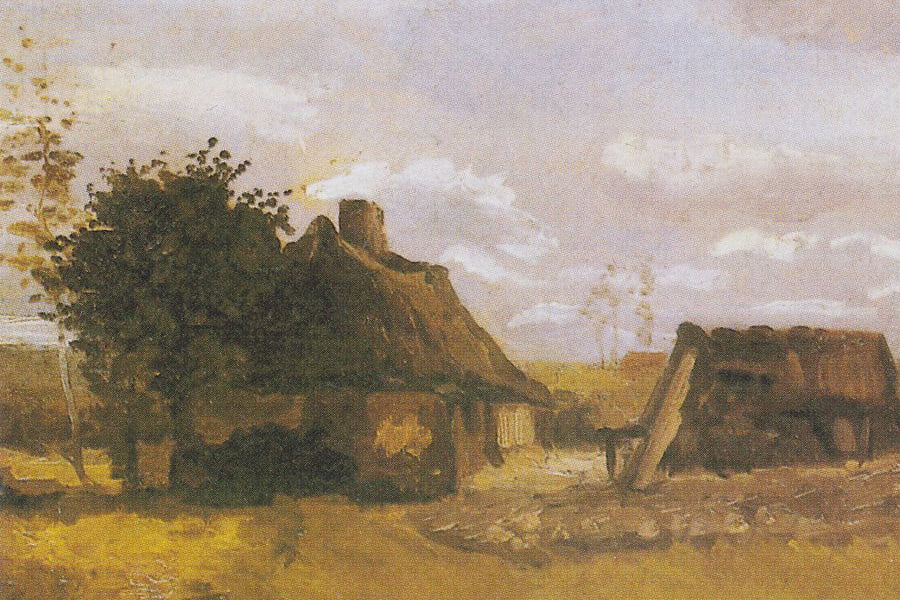Van Gogh Cottages and Farmhouses
Some of the Cottages that Vincent painted, which he referred to as “Human Nests” or “Huts,” were located around the Collse Watermill in Eindhoven.
Vincent spent a fair amount of time in this area painting Plein Air with friends and fellow artists. One of those friends was Anton van Rappard, who, during one trip, had departed to accept an award in London. In a letter dated May 29, 1884, Vincent wrote:
Since you left, I’ve been working on a WaterMill – the one I asked about in that inn at the station where we were talking to that man whose husband I told you seemed to be working on a chronic lack of change in his pocket.– it’s a ditto case like the two other watermills we visited together but with two red roofs and that one sees right from the front – with poplars around it.”
The two other watermills Van Gogh was referring to were likely the Opwettense and Hooijdonkse mills in Nederwetten.
(We have also learned of a collaboration between Vincent and Anton Kerssemakers of the watermill at Gennep).
“If you had these 4 canvases and a few more, smaller studies of cottages, and someone saw nothing by me other than those, they’d be bound to think that I did nothing other than paint cottages.” Vincent to Theo, July 1885.
In 2014, a group of archaeologists and researchers led an expedition to the area and found two very old black alder trees that were a short distance from each other, along with a small farmhouse. The researchers noted that their finding was reminiscent of Van Gogh’s painting “Hut with man coming home” (JH 824).
Other huts were also spotted, which may well have been “Woman with Goat” (JH 823), “Dilapidated Barn and a Bending Woman” (JH 825), and “Hut with Digging Woman” or “Cottage with Peasant Woman Digging” (JH 803).
They had determined that the Digging Woman was likely Catharina Helena Bruininga, an old spinster whom Vincent noted goes by the name of “Witch’s Head,” in his letters to Theo.
In a letter to Theo dated July 1885, Vincent wrote, “I’ve never seen the little house where Millet lived — but I imagine that these four little human nests are of the same kind. One of them is the residence of a gentleman who’s popularly known here as ‘the peasant of Rauwveld’ — the other is occupied by a worthy soul who, when I went there, was engaged in nothing more mysterious than turning over her potato patch, but must also be able to work magic, though — at any rate she goes by the name of ‘the witch’s head.’“
Researchers determined that the peasant was likely Johan van Lith, the owner of a piece of land in Tongelre (near Nuenen) known as ‘Rouwveldje’ or ‘Raauwvelden’… And quite possibly the subject of Cottage with peasant coming home (F 170 / JH 824).
We know that Vincent often painted Plein-air (outdoors) and painted in all kinds of weather, which we learned through letters to Theo, and also as a result of finding fragments of dirt, sand, leaves, and other products of nature implanted on many of his paintings.
The Painting in Question (below) also has fragments of dirt embedded in the paint. Of course, this doesn’t necessarily conclude the theory that this painting is a ‘Van Gogh’, just another indication that it could be.
Cottage and woman with a goat (F 90/JH 823), Cottage with peasant coming home (F 170/JH 824) apparently retouched, and Cottage with tumbledown barn and stooping woman (F 1669 / JH 825) were part of the larger canvases Vincent is referring to while the smaller versions would include Cottage with woman digging (F 89/JH 803) which measures 30.5 x 40.0 cm, and Cottage with trees (F92/JH810) measuring 44.0 x 59.5 cm. (below) which is basically the same size as Farmhouse with barn and well!

Oil on paper, on canvas 1890
From the 1913 Armory Show–the first major exhibition of European modern art in the U.S.
Archive of the Foundation E.G. Bührle Collection, Zurich













